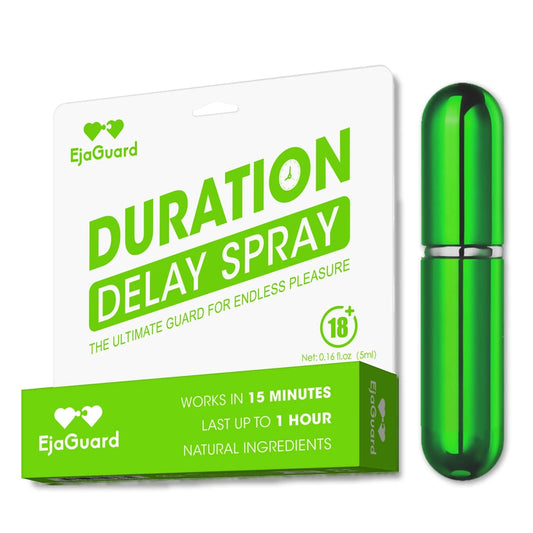Introduction
Penis size is often the talk of many who wish their dick could either be bigger or smaller. Myths and misinformation are sure to fill the air as a result. But what is most essential is accuracy so that one can build confidence as well in understanding one's body. Whether in measurement or what is considered an average size, or even in practical matters such as choosing the right condom, this guide has it all.
Here we include instructions for measuring your penis, along with a chance to dispel a lot of popular myths and face up to some frequently asked questions. So, by the end of it, you can expect to have a clear, factual replacement for myth turned into self-assurance.
Why Measure Penis Size?
As it turns out, measuring one's penis size is not driven by curiosity alone. As a matter of fact, it has certain advantages. Here are just some of the important reasons:
1. To be More Aware of Your Body
- What is typical and abnormal for you is determined by your measurements. This demonstrates the changes in your body over time when synchronizing a person's life cycle to see if medical attention is warranted.
2. Choosing The Right Condom
- A condom that doesn't fit will be very uncomfortable and, in most cases, dangerously unsafe. By measuring your length and girth you can get the right size condom and avoid it slipping off or breaking while in use.
3. Confidence Booster
- Almost all men worry unnecessarily about their sizes. Thus, getting to know what your measurement is, is one sure way of decreasing any doubts and boosting self-esteem.
4. Understanding Change in Size
- Many changes that occur suddenly such as a change in size or even shape might be an indicator that something might be off health-wise. Regular measurements will help to track a person's health over time.
If you know why measuring becomes important, then it becomes meaningful, and you can also move on with the process with a clear mind.

Tools for Exact Measurement
To properly assess penis size, it is important to use appropriate instruments and techniques. In some cases, poor methods, but perhaps involving the use of unreliable tools, will yield incorrect results. These are the instruments that you will need for accurate measurement:
1. Soft Measuring Tape
- This is ideal because it can measure length and girth. Its flexible nature allows it to hug the contours of the penis perfectly.
- Why It’s Ideal: It’s understood that the thing measures curves easily and gives exact readings.
- Pro Tip: Find a tape with clear inch markings or centimeters.
2. Piece of String
- If you lack a measuring tape, string is a good alternative for girth. Just wrap it around the penis, and then measure the marked length against the ruler.
3. Ruler or Straight Edge
- An ordinary ruler also works excellently in length measurement. Ensure you keep the ruler parallel to the penis to avoid errors.
- Pro Tip: Tenderly push the ruler against the pubic bone to account for any fat at the base.
4. Penis Size Calculators
- You can use several applications and online tools to enable the approximation of how large or small your penis is relative to the average wideness and length.
- For best results, use the calculators only after making physical measurements.
5. Well-Lit, Comfortable Environment
- Good lighting and tranquility are paramount for accurate measurement. Both cold atmospheres or anxiety influence size, so be calm.

Step-by-Step Guide to Penis Size Measurement
Follow these steps properly to measure the length and girth of your penis.
Step 1: Prepare Yourself for Measurement
- Make sure your penis is completely erect before taking measurements to ensure that they will be consistent.
- Soft measuring tool or piece of string, ruler.
Step 2: Inch the Length
- Place a ruler along the top of the penis.
- Press it slightly against the bone at the top for the full length.
- Measure from the base to the tip of the glans (the head). Do not include any foreskin that extends beyond the tip.
Step 3: Measure Girth
- Wrap a soft measuring tape or thin piece of string around the thickest part of the shaft.
- Make sure the tape is snug but does not apply pressure.
- If string, overlap and hold with a ruler to measure.
Step 4: Keep the Records
- Write down both measurements so that you can refer to them in the future.
- Take more than one measurement for accuracy and average them together.
- Option: Measure While Flaccid
Measure length and girth while flaccid as well; however, record that size may differ based on temperature and mood.
Top 5 Misconceptions About Penis Size
The topic of penis size is filled with myths and misconceptions that can cause unnecessary worry. Here are five common myths and the facts to clear them up:
1. Bigger is Always Better
- Myth: A larger penis is always more desirable.
- Fact: Experts suggest that sexual satisfaction depends more on technique, communication, and emotional connection than on size.
2. Shoe Size Predicts Penis Size
- Myth: A man’s shoe size can predict the size of his penis.
- Fact: There’s no scientific evidence linking foot size to penis length. These are unrelated traits.
3. Penis Size is Fixed After Puberty
- Myth: Penis size doesn’t change after puberty.
- Fact: While growth stops, fat around the pubic bone can make the penis appear smaller. Losing weight can restore visible length, which is why many notice changes in appearance penis before and after weight loss.
4. Most Men Have Large Penises
- Myth: The average penis size is much larger than it is.
- Fact: The average erect penis length is about 5.16 inches, with a girth of 4.59 inches. Media often exaggerates this.
5. Measuring Once is Enough
- Myth: A single measurement provides accurate results.
- Fact: Factors like arousal level and temperature affect size. Take multiple measurements and average them for accuracy.
Average Penis Sizes and Percentiles
Understanding averages helps set realistic expectations. Here's what the data tells us about penis size globally:
1. Global Averages
- Erect Length: 5.16 inches (13.12 cm)
- Flaccid Length: 3.61 inches (9.16 cm)
- Erect Girth: 4.59 inches (11.66 cm)
- Flaccid Girth: 3.67 inches (9.31 cm)
These figures represent global averages based on multiple studies. For country-level data, please you can check out this chart by WorldData.info.
2. Percentiles Explained
Percentiles show how your size compares to others:
- A penis at the 50th percentile means half of men are larger, and half are smaller.
- For example, an erect length of 5.16 inches is average, while 6 inches puts you in the 84th percentile.
3. Factors Affecting Size
- Genetics: Your DNA plays the biggest role in determining size.
- Age: Size is stable after puberty but may slightly decrease with age due to reduced blood flow.
- Ethnicity: Small variations exist across populations but are often minor.
FAQs About Penis Size
Here are answers to some of the most common questions about penis size and measurement:
1. Does Penis Size Affect Sexual Performance?
- Answer: No. Performance depends on communication, confidence, and compatibility. Size matters less than how well partners connect.
2. How Accurate Are Penis Size Calculators?
- Answer: They can give a rough idea based on averages but depend on precise input. Use them alongside physical measurements for the best results.
3. What’s the Best Way to Measure Girth?
- Answer: Use a soft measuring tape or string. Wrap it around the thickest part of the shaft and measure the marked length.
4. Does Losing Weight Make the Penis Look Bigger?
- Answer: Yes. Fat around the pubic bone can obscure part of the shaft. Shedding weight makes more of the penis visible.
5. Why Does Flaccid Size Vary?
- Answer: Factors like temperature, stress, and blood flow cause fluctuations in flaccid size. These changes are normal.
6. How to Have a Bigger Dick Naturally?
- Answer: Permanent natural growth isn’t possible, but here’s what can help appearance:
- Exercise: Boost blood flow with regular cardio.
- Healthy Diet: Improve circulation with balanced meals.
- Lose Weight: Reduce fat around the pubic bone to expose more of the shaft.
- Quit Smoking / Vaping: Improve blood flow for better erections.
Addressing Concerns About Penis Size
Worrying about penis size is common, but it’s often unnecessary. Here’s how to address those concerns:
1. Size vs. Sexual Satisfaction
- Sexual satisfaction comes more from emotional connection and technique than size. Focus on communication and learning what your partner enjoys.
2. Dealing with Myths and Misconceptions
- Recognize that media exaggerates penis size, often creating unrealistic standards. The average size is smaller than many believe.
3. Confidence Over Comparison
- Instead of comparing yourself to others, focus on building self-assurance. Confidence and skill matter far more in intimacy.
4. When to Seek Medical Advice
- If you notice sudden changes in size or have health concerns, consult a doctor. Conditions like Peyronie’s disease can affect size or shape and require treatment.
Conclusion
Penis size is a subject of curiosity, concern, and countless myths. This guide aimed to provide clear, factual information to help you measure accurately, understand averages, and separate fact from fiction.
Key Takeaways:
-
Accurate Measurement: Use tools like a soft measuring tape and measure both length and girth under consistent conditions.
-
Global Averages: The average erect length is 5.16 inches, and the average girth is 4.59 inches—much smaller than media suggest.
-
Misconceptions Debunked: Size matters less than communication, technique, and emotional connection in achieving satisfaction.
-
Confidence Over Size: Building confidence, understanding your body, and focusing on relationships are more important than comparisons.
If size concerns persist, remember that sexual health and performance involve more than just measurements. Consult a doctor for medical concerns and focus on building self-assurance through knowledge and self-acceptance.
Call-to-Action
For more insights and products to enhance your confidence and sexual wellness, visit EjaGuard. Explore delay spray, lubricants, and other solutions tailored to support your needs.
Embrace your uniqueness and focus on what truly matters—your health, happiness, and relationships.
 Buy Now
Buy Now



